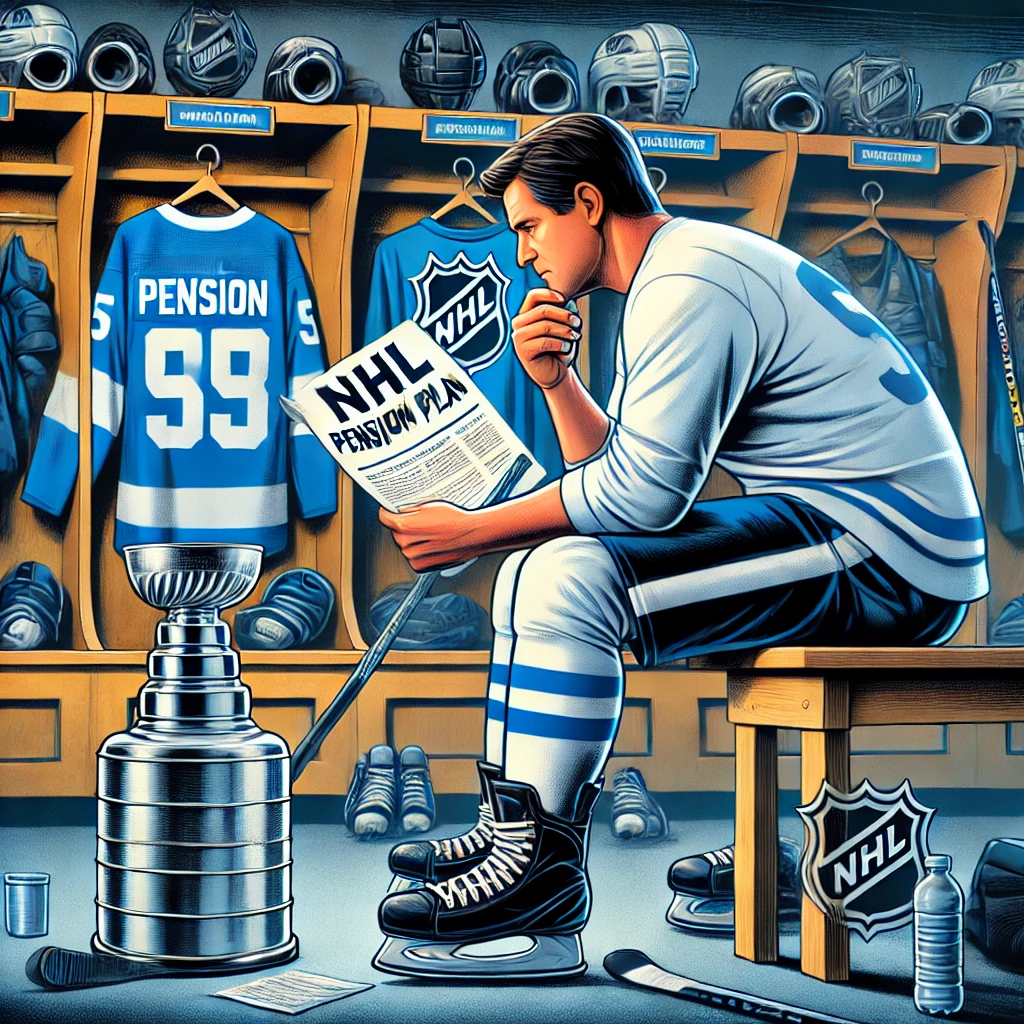Introduction
When you think about the National Hockey League (NHL), you probably imagine the fast-paced games, the intense rivalries, and the incredible athleticism on display. But behind the scenes, there’s a crucial aspect that significantly impacts the lives of these athletes once they hang up their skates: the NHL pension plan. This financial safety net is designed to provide security and stability for players long after their careers on the ice are over.
What is the NHL Pension Plan?
The NHL pension plan is a retirement program established to support NHL players financially after they retire from professional hockey. Given the physical demands and relatively short career spans in hockey, this plan is essential for players to transition smoothly into life after sports. The plan ensures that players receive a steady income, helping them maintain their lifestyle and financial security once they no longer earn from playing.
How Does the NHL Pension Plan Work?
Understanding the intricacies of the NHL pension plan can be quite complex. Essentially, the plan is funded by contributions from the players and the league itself. Players accumulate benefits based on the number of credited seasons they play in the NHL. A credited season is defined as a season where a player is on the active roster for at least ten games.
For each credited season, players accrue a specific amount towards their pension. The longer a player’s career, the more substantial their pension benefits will be upon retirement. It’s also worth noting that the pension plan has undergone several enhancements over the years, ensuring it remains robust and beneficial for players.
Eligibility and Benefits
To be eligible for the NHL pension plan, players must meet certain criteria regarding their time in the league. Typically, a player must have played at least 160 games in the NHL to start receiving benefits. Once eligible, players can begin to draw from their pension at age 45, with the option to defer payments for a larger sum later.
The NHL pension plan also includes provisions for spousal benefits, ensuring that in the unfortunate event of a player’s death, their spouse continues to receive a portion of the pension benefits. This aspect of the plan underscores its comprehensive nature, providing financial support not just to players but also to their families.
The Importance of the NHL Pension Plan
Given the physical toll that hockey takes on the body, many players retire relatively young compared to other professions. The NHL pension plan offers a safety net that supports players who may face challenges transitioning to a new career or managing health issues post-retirement.
Financial Security
One of the most significant advantages of the NHL pension plan is the financial security it provides. For many players, hockey has been their primary source of income. Post-retirement, maintaining the same standard of living can be challenging without a steady income. The pension plan mitigates this concern by ensuring that players have a reliable source of income once they stop playing.
Health and Well-being
The physical demands of hockey can lead to long-term health issues, including injuries and conditions that might not manifest until years after a player retires. The NHL pension plan often works in tandem with other health benefits and post-career programs to support players in managing these health challenges.
Evolution of the NHL Pension Plan
Over the years, the NHL pension plan has seen significant changes aimed at improving benefits for players. Initially established in 1947, the plan has evolved through collective bargaining agreements between the NHL and the NHL Players’ Association (NHLPA). Each negotiation has brought enhancements, reflecting the changing needs and expectations of players.
Key Milestones
- 1947: The inception of the NHL pension plan. At this stage, the plan provided basic retirement benefits to players.
- 1980s: Major reforms introduced, including better funding and increased benefits.
- 2005 CBA: Significant enhancements were made, including more substantial contributions and improved benefits for retired players.
- 2013 CBA: The plan’s benefits were expanded further, offering greater financial security and more flexible retirement options.
Current State
Today, the NHL pension plan is one of the most comprehensive in professional sports. It continues to adapt, ensuring that players receive the best possible support post-retirement. The plan is a testament to the NHL’s commitment to its players, recognizing their contributions and ensuring their well-being beyond their playing days.
Planning for Retirement: What NHL Players Need to Know
Retirement planning is crucial for NHL players, given the unique nature of their careers. Here’s what players should consider:
Start Early
The sooner players start planning for their retirement, the better prepared they will be. Understanding the NHL pension plan and how it fits into their overall financial strategy is essential.
Diversify Income Sources
While the NHL pension plan provides a solid foundation, players are encouraged to diversify their income sources. Investments, post-retirement careers, and endorsement deals can all contribute to a more secure financial future.
Health and Wellness
Maintaining good health is paramount. Players should take advantage of the health benefits and programs offered through the NHL and the pension plan to manage any long-term health issues.
Navigating the NHL Pension Plan: FAQs
How Much Can Players Expect to Receive?
The amount a player can receive from the NHL pension plan depends on several factors, including the number of credited seasons and the age at which they begin to draw their benefits. Generally, players can expect a significant portion of their income to be replaced through the pension.
What Happens If a Player Doesn’t Meet the Eligibility Requirements?
Players who don’t meet the minimum game requirement for the NHL pension plan may not receive full benefits. However, other retirement programs and savings plans are often available to provide some level of financial support.
Can Players Access Their Pension Early?
Yes, players can start receiving benefits as early as age 45, although deferring payments can result in a larger pension payout. This flexibility allows players to choose the best option based on their financial needs and goals.
Conclusion
The NHL pension plan is a vital component of a player’s financial future, providing stability and security after their playing days are over. With careful planning and an understanding of how the plan works, players can ensure they are well-prepared for retirement. Whether you’re an aspiring NHL player or a seasoned veteran, knowing the ins and outs of the NHL pension plan is crucial for securing your future.

